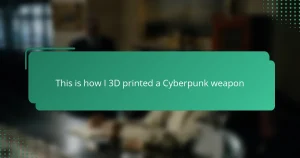Key takeaways
- Science fiction props serve as portals to imaginative worlds, embodying storytelling through design and detail.
- Choosing the right materials and planning are crucial steps in creating accurate and meaningful replicas, like the TARDIS.
- Adding personalized touches, such as weathering techniques and functional details, enhances a replica’s authenticity and emotional connection.
- The building process transforms into a meditative experience, reflecting the creator’s passion and connection to the science fiction universe.

Understanding Science Fiction Props
When I first started exploring science fiction props, I was struck by how they’re more than just objects—they’re gateways to entire universes. Have you ever held a prop and felt a sudden rush of nostalgia or excitement? That’s the power these items have, bridging imagination and reality in a way few things can.
I’ve always found that understanding a prop means appreciating its design, purpose, and cultural impact. For me, it’s like uncovering layers of storytelling embedded in the details—a button, a texture, or even a simple shape can tell you volumes about the fictional world it comes from.
What fascinates me most is how these props become symbols that fans cherish and recreate. They inspire creativity and connection, reminding us that science fiction isn’t just about distant galaxies—it’s about the joy of sharing those adventures through tangible, crafted memories.
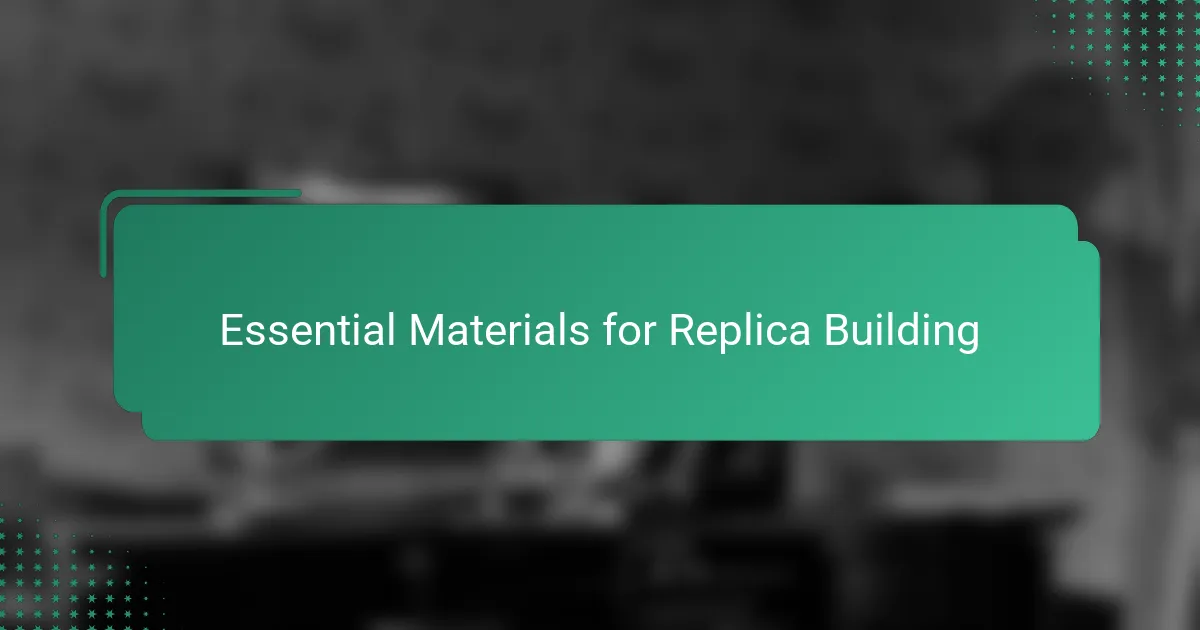
Essential Materials for Replica Building
When I first gathered materials for my TARDIS replica, I quickly realized that choosing the right wood was crucial. Plywood with a smooth finish gave me a sturdy base while still being workable, but I made sure to pick sheets that weren’t too heavy—after all, I wanted to move the finished piece without straining myself. Have you ever struggled with a material that felt solid but was just too bulky? That was my lesson early on.
Paint and primer became my best friends throughout the build. I spent hours testing different shades of blue because capturing that iconic Police Box color mattered more than I initially thought. Getting the exact tone wasn’t just about visual accuracy; it was about feeling connected to the Doctor’s world every time I looked at it.
Then there are the finer details—the illuminated signs, the window panes, the door handles. I sourced lightweight acrylic for the windows and used LED strip lights to give that soft glow behind frosted plastic. These small touches transformed the structure from just a box to something that truly felt alive, as if it might start spinning through time at any moment. It’s these details that turn a replica into a personal treasure.
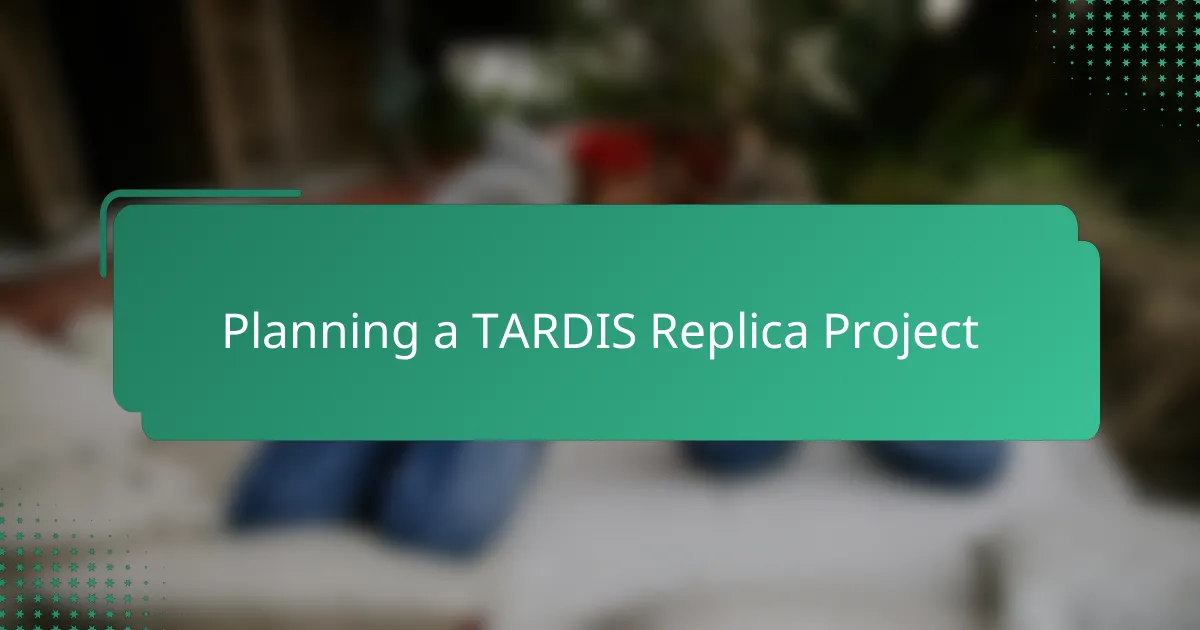
Planning a TARDIS Replica Project
Planning a TARDIS replica project is where the magic truly begins. I found that starting with a clear vision helped me avoid getting overwhelmed—asking myself, “What size and level of detail do I want?” set the tone for every decision after. It’s amazing how much a simple sketch or rough plan can clarify what materials and tools you’ll need.
Budgeting was another eye-opener. I didn’t want costs to spiral out of control, so I made a list of essential parts and prioritized them. Have you ever been halfway through a project only to realize you ran out of funds for a key element? That’s a tough lesson I narrowly avoided by mapping expenses early on.
Finally, I considered the workspace and timeline. Building a TARDIS isn’t a weekend hobby for me—it required carving out time and a spot where I could work without interruptions. Thinking ahead about these logistics made the whole process smoother and kept frustration at bay. Have you tried building something big without enough space? It’s much harder than it looks.
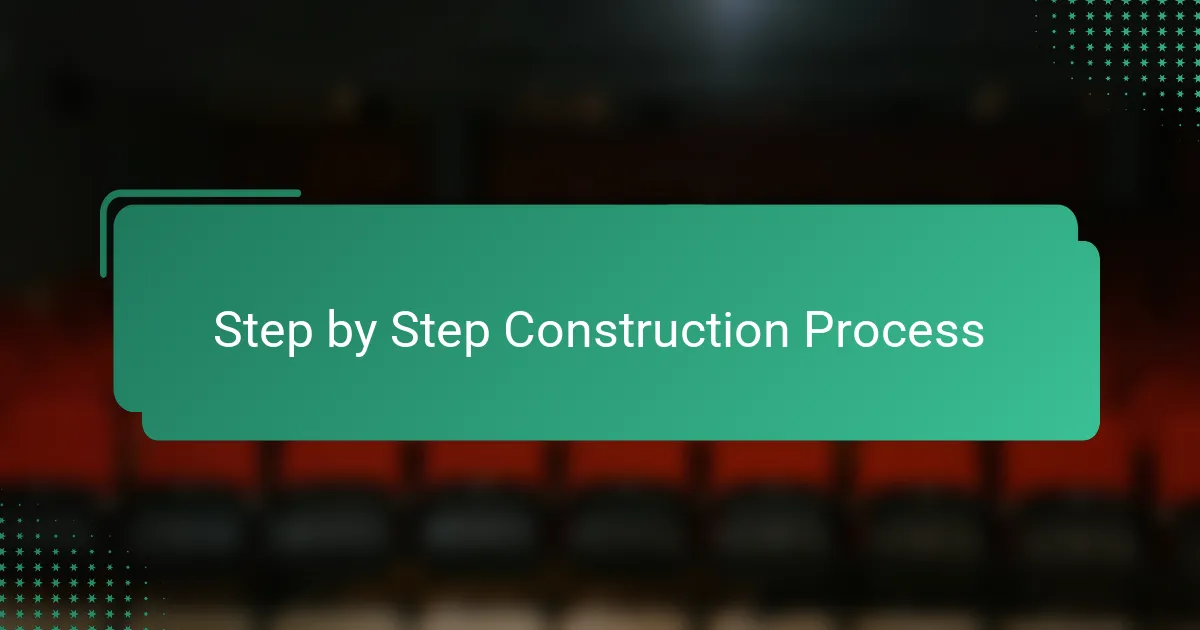
Step by Step Construction Process
Starting the construction, I laid out the plywood panels carefully, cutting them to match my measurements with precision. Have you ever felt that mix of excitement and nervousness when making the first cut? It’s a moment where everything starts to feel real—like the TARDIS is slowly coming out of the blueprint and into your hands.
Next, assembling the panels was a puzzle that demanded patience. I used wood glue and clamps to make sure each joint was sturdy, checking alignment constantly because even a slight misstep would throw off the whole shape. This stage taught me the value of slow, deliberate work, and how satisfaction grows as the box takes its iconic form.
Adding the finishing touches was where the magic happened. Painting each side in layers, carefully installing windows and lighting, I watched the TARDIS transform. Isn’t it amazing how small details like signs and knobs suddenly give life to a creation? For me, that’s when the replica truly felt like a portal to another world.

Painting and Weathering Techniques
Painting the TARDIS demanded patience and a steady hand, especially when mixing that perfect shade of blue. I remember feeling a mix of frustration and satisfaction as I applied multiple thin coats, knowing that rushing would ruin the finish. Have you ever found that waiting between layers makes all the difference? It really does—each coat deepened the color and gave the surface a richer look.
Weathering was where I got to add character and history to the piece. Instead of a pristine box, I wanted mine to feel like it had traveled through time and space countless times. I used gentle sanding and dark washes to create subtle scuffs and grime, imagining each mark as a story etched into the wood. Doesn’t adding these imperfections make the replica feel more real and lived-in?
Dry brushing became my secret weapon to highlight edges and details. By lightly dragging a nearly dry brush with a lighter paint over raised surfaces, I created the illusion of wear and sun-faded paint. It’s amazing how such a simple technique can bring dimension and depth, turning a flat panel into something vibrant. Have you tried this method before? It’s honestly one of my favorite parts of prop finishing.

Adding Functional Details and Lighting
Adding functional details and lighting was where the TARDIS truly began to whisper its secrets. I spent hours figuring out how to make the top lantern light actually glow—not just with any bulb, but with LEDs that gave off that soft, pulsating light you see in the show. Have you ever been surprised by how something as simple as the right lighting can elevate a prop from decoration to an immersive experience? That moment when the light flickered on was pure magic for me.
Installing the illuminated “POLICE BOX” signs was tricky. I wanted them to look authentic but also be durable enough to handle occasional moving and touching. Using frosted acrylic with LED backlighting created that diffused glow I was after, making each letter pop just right. It’s details like these that make me feel like I’m not just building a box, but a living piece of sci-fi history.
For controls and buttons, I added small switches that click satisfyingly when pressed, powered by discreet wiring cleverly hidden within the frame. I love how these functional touches invite interaction—it’s like the TARDIS is waiting for its next command. Does adding these realistic features deepen your connection with the replica? For me, it absolutely does, turning a static model into something that feels responsive and alive.
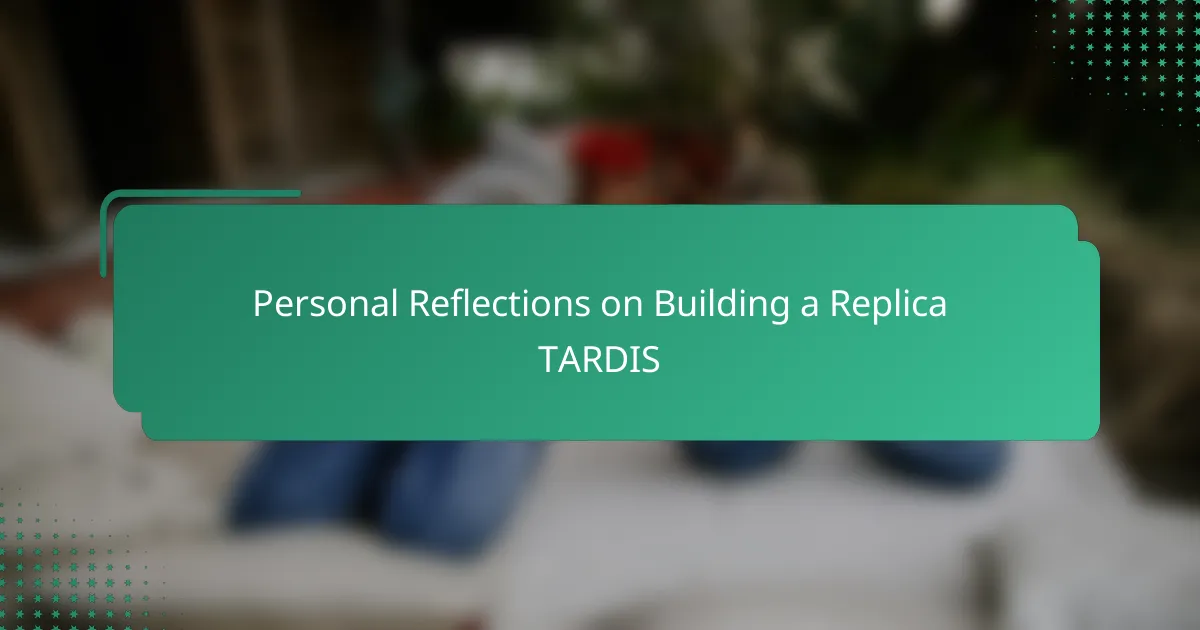
Personal Reflections on Building a Replica TARDIS
Building my replica TARDIS felt like stepping into a lifelong dream. I remember moments when frustration crept in, especially during those tiny, fiddly details, but there was always a spark of joy when a tricky part finally clicked into place. Have you ever experienced that blend of exhaustion and triumph that just makes the effort worth every minute?
What surprised me most was how personal the project became over time. It wasn’t just about recreating a sci-fi icon; it turned into a kind of meditation, a way to slow down and focus on something I truly loved. Each layer of paint and every screw tightened felt like a conversation between me and the Doctor’s world.
Sometimes, I catch myself just standing near the finished TARDIS, marveling at how something I built can carry such magic. It makes me wonder—how much of that magic comes from the prop itself, and how much springs from the passion poured into making it real? For me, it’s that mixture that turns a replica into a cherished companion.

